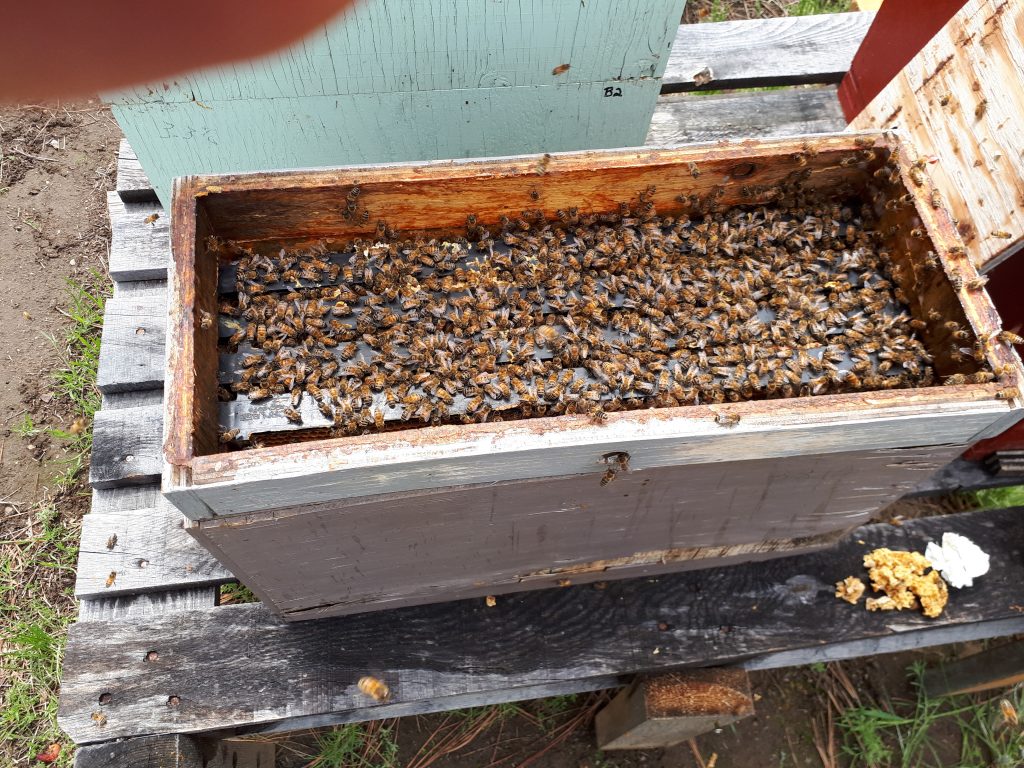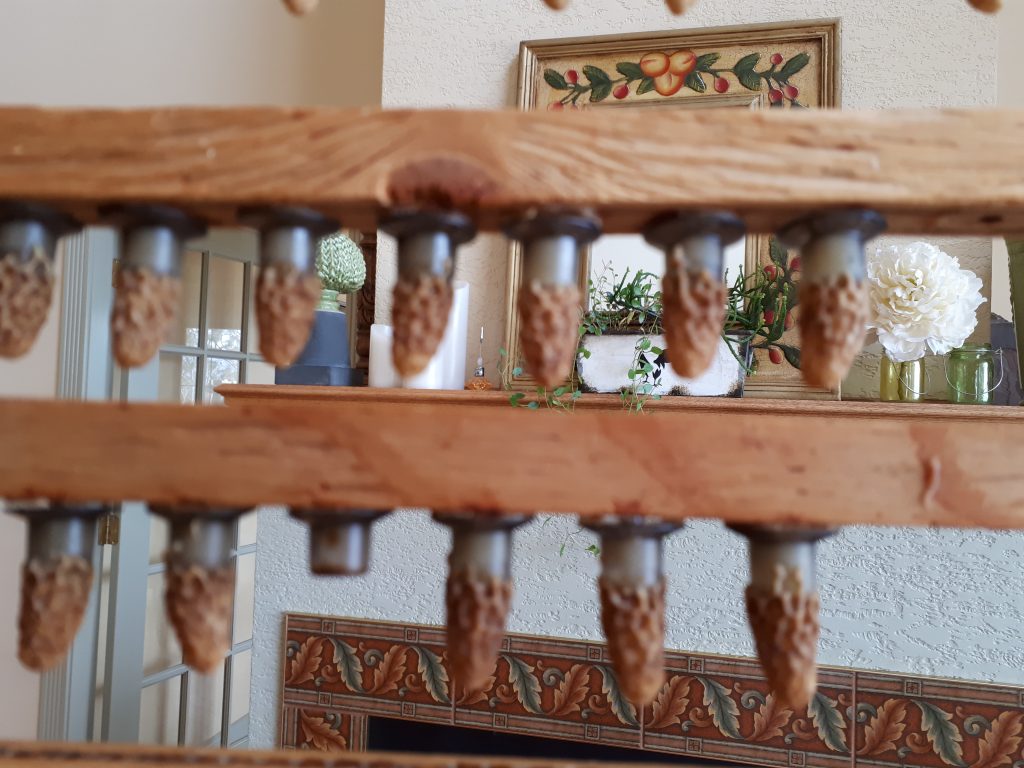
Everyone wants to have healthy bee colonies. Over many years of managing the hives on our farm, it has become very clear to me that you get what you give. In other words, to have and sustain a healthy apiary you, as the beekeeper, must be willing to spend a certain amount of time and resources towards your cause. By consistently applying a few basic techniques. I believe you will have healthier and more productive hives.
BRINGING YOUR BEES HOME
So, your bees are now home! What’s next? First, transfer the four frames of bees to the center of your bee box. Then, add drawn frames or frames of foundation to the outside. Next, feed the bees with a solution of sugar water at the ratio of one to one (one part sugar to one part water). It really helps the bees if you can feed them right away as they have few foragers at this time that can bring nectar in. The syrup will speed up the process of drawing out the foundations so that these frames can now be useful to the colony. It won’t hurt the bees if you leave them in their original nuc box for a day or two.
FEED YOUR BEES
Towards the end of summer in early September, begin to feed your bees. Even though the bees will still be out foraging, pollen supplies will be far less. To convert the syrup into honey in time for winter, the bees will have to expend a lot of energy in a very short time. They will have to use their own body proteins to produce the invertase enzyme. Before going into winter bees should be resting and rebuilding their reserves, not working themselves to a dither.
USE POLLEN SUBSTITUTE
Easily obtainable on the market, pollen patties or pollen substitutes should be made available to your bees on a regular basis. Bees given protein supplements have shown to have stronger immune systems to ward off parasites and infections. Also, colonies fed a pollen substitute overwinter better producing stronger colonies with less winter losses.
RE-QUEEN OFTEN
As a queen bee ages, she begins to produce less pheromones and becomes less influential to the overall well-being of the colony. With a younger queen all operations of the colony run smoother, she is more productive, stronger and increases the hive’s production. Your queens should be replaced at least every 2 years. An unproductive queen should be replaced as soon as possible and should not head a colony going into winter. Ideally, I would recommend that you re-queen each colony in the late summer using a queen cell.
ROUTINE COLONY INSPECTION
Take the time necessary to check out your hives regularly for mites and brood irregularities. Avoid mass treatment if possible, as quite often not all of your colonies require treatment at the same time. Mass treatments are costly and also add stress to your bees. If your bees are healthy, they should be able to withstand a small infestation. Sustainable beekeeping is your goal (sometimes referred to as organic).
REPLACE OLD COMBS
Heavier combs and black combs contain spores which could start infections that are not always visible. The bees must then spend much energy fighting the infection and have less energy to spend on bee and honey production. Remove these old combs and give your bees a break. Try to rotate two old combs per hive per year. By doing so, after five years all combs will have been recycled. Avoid keeping combs that are older than five years old.

